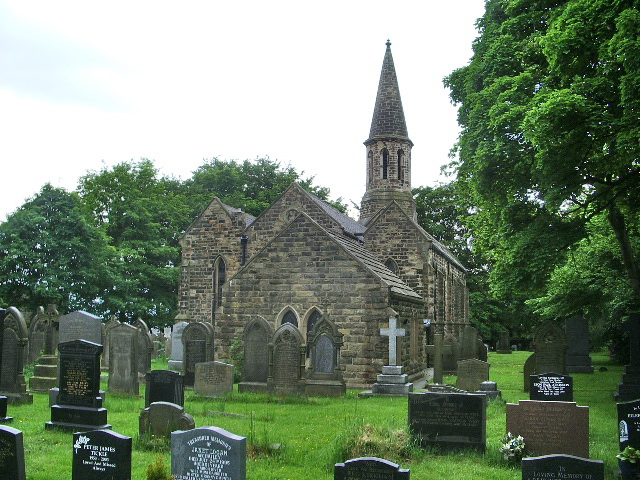Parish Church of St James the Great - Briercliffe - Harle Syke - Burnley

History
St James was built in 1839–41 and designed by the Lancaster based architect Edmund Sharpe. The church cost about £1,300 (£100,000 as of 2015), most of which was raised by public subscription, and the land was given by the Duke of Buccleuch. It was consecrated on 26th September 1841 by Rt Revd John Bird Sumner, Bishop of Chester. At that stage, the church had seating for 515 people. In 1869 a new steeple was added to the church and other changes were made to the church byPaley and Austin, Sharpe's successors in his Lancaster practice. In 1881 new pews were installed and the old pulpit was removed. In 1992 the choir vestry was enlarged and a meeting room was built.
Architecture
Exterior
The church is constructed in sandstone with a stone slate roof and is in Early English style. Its plan consists of a nave with a short chancel and a tower at the west end. The roof is steeply pitched and divided into three, although internally the church consists of a single chamber with a flat ceiling. The nave is divided into bays by pilaster buttresses, between which are lancet windows. The tower is partly embraced by gabled pseudo-aisles, and is in two stages. The lower stage contains a west door, above which are lancets and gables. From this rises an octagonal drum containing a belrfy with lancets, and over this is a short octagonal spire. At the east end is a stepped triple lancet window.
Interior
Inside the church are galleries on three sides supported by cast iron columns; the galleries contain box pews. The two-manual organ was built in 1865 by Foster and Andrews of Hull. Improvements were made by the same firm in 1901 and 1906. In 1927 Jardine and Company of Manchester cleaned the organ and in 1989 they restored it.
Appraisal
In the Buildings of England series it is described as "a small, rather strange church", but Hughes disagrees, saying "it is one of Edmund Sharpe's more delightful designs". In the National Heritage List for England the description states that it is an "unusually unaltered example of an early 19th-century church".
External features
The churchyard contains the war graves of five soldiers of World War I, and two of World War II.
The Cache
You're looking for a magnetic micro located close to the entrance of the churchyard. The cache contains a log only, so please be sure to BRING YOUR OWN PEN / PENCIL.
I've taken the co-ordinates from our GPS, but if anyone seems to have any problems, please contact me via email and i'd be glad to check them out.
Please replace as found in the same location for other cachers to find. Thank you very much for visiting.
“
If anybody would like to expand this series please do, I would just ask that you could let Sadexploration know first atchurchmicro@gmail.com so he can keep track of the Church numbers and names to avoid duplication.There is also a Church Micro Stats & Information page found via the Bookmark list”